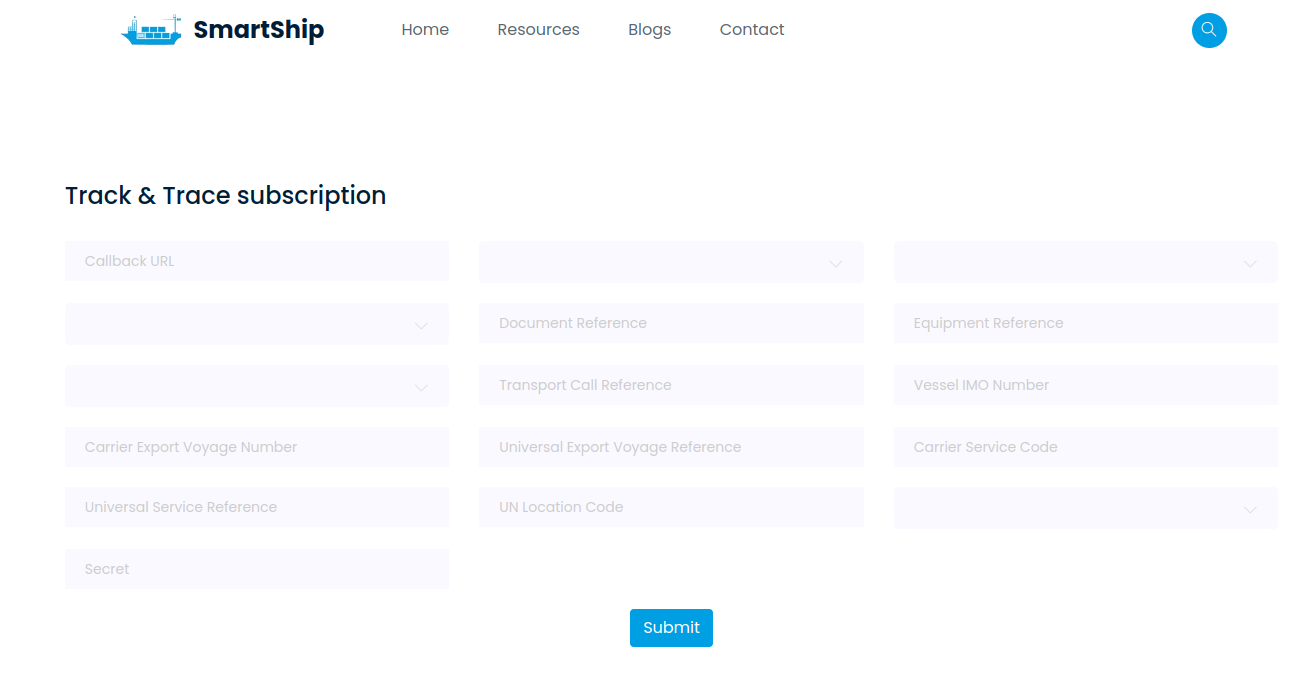Login To The Shipper Account
Using your registered username and password, login to the shipper account
In container shipping, a shipper refers to an individual or entity that is responsible for arranging the transportation of goods via containers from one location to another. Shippers play a crucial role in the supply chain by organizing the shipment of goods, including packing, labeling, and booking cargo with carriers.
With the implementation of DCSA (Digital Container Shipping Association) standards, shippers are experiencing a transformation in how they conduct container shipping operations. These standards, developed collaboratively by industry leaders, aim to digitize and standardize processes related to container tracking, documentation, and operational workflows.

Using your registered username and password, login to the shipper account
The shipper has submitted a formal booking request, encapsulating essential booking details across two pages. The initial page delineates primary booking particulars, while the subsequent page comprehensively outlines commodities, document parties, requested equipment, and shipment locations. This meticulously crafted submission provides all requisite information necessary for the booking process.
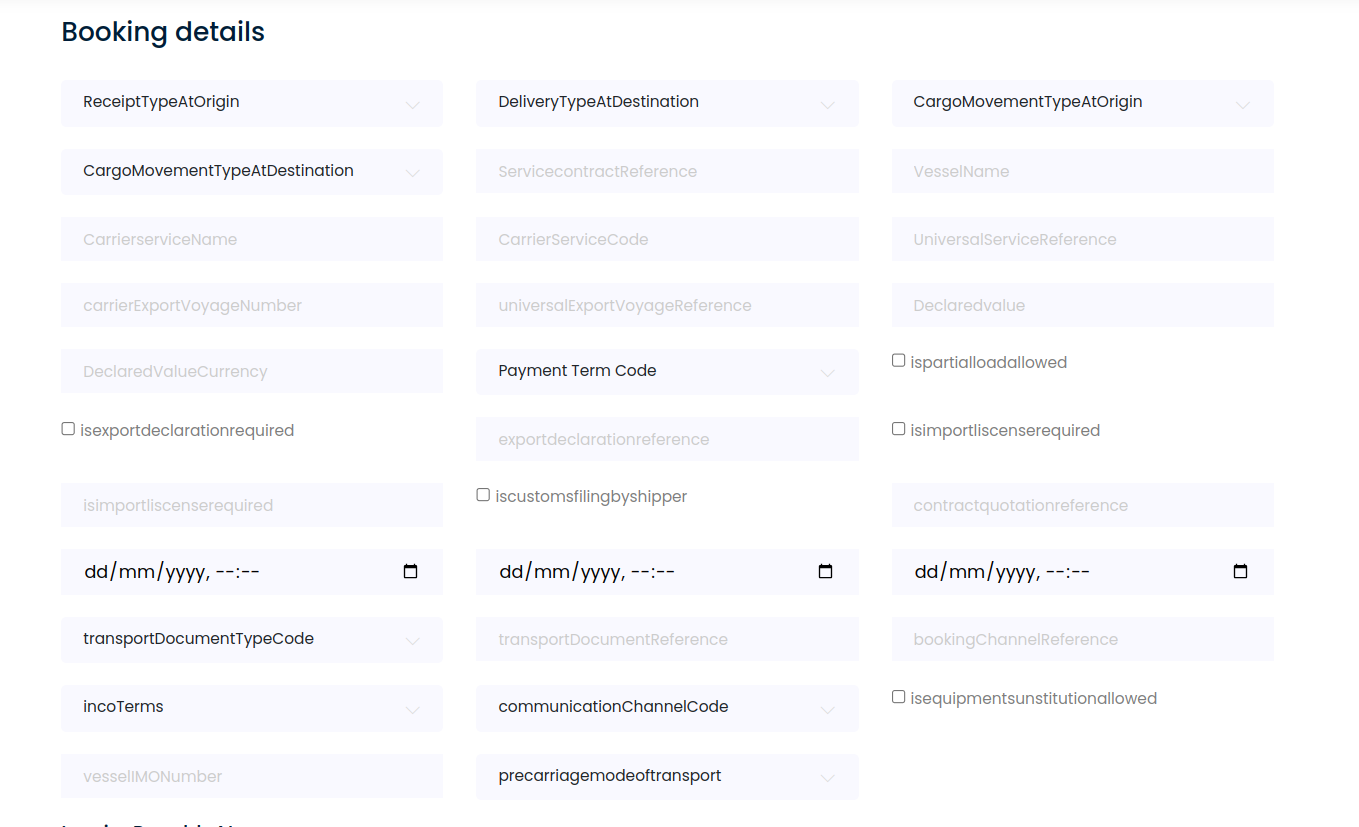

Upon receiving an update request from the carrier, the shipper revises the shipping instructions accordingly and posts the updated version. The shipper selects the specific section requiring modification and ensures the updated information is accurately reflected, maintaining clear communication with the carrier.
After the shipper submits the booking request, the carrier proceeds to conduct a credit check. Following this, the carrier promptly notifies the shipper regarding the outcome—whether the credit check has been cleared or rejected. The shipper is then informed of the status, ensuring transparency and clarity throughout the process.
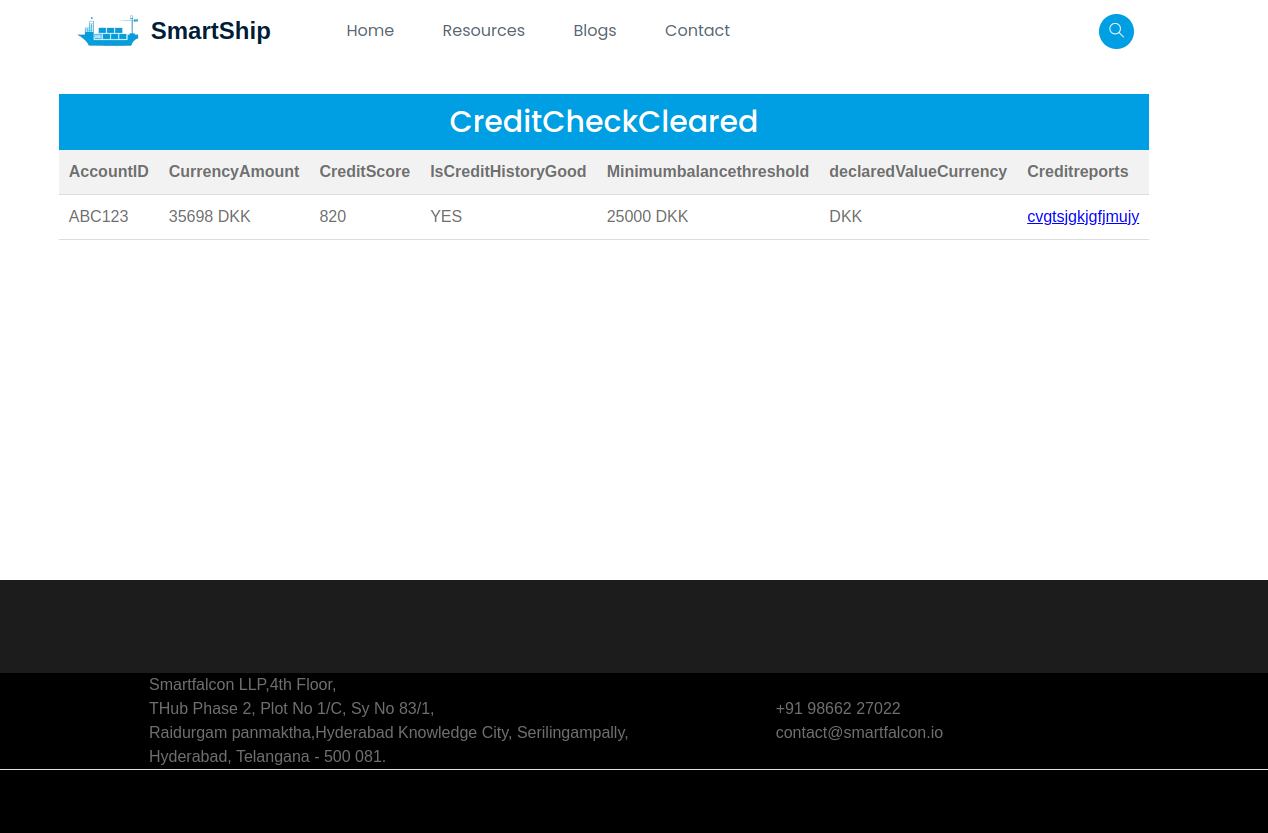
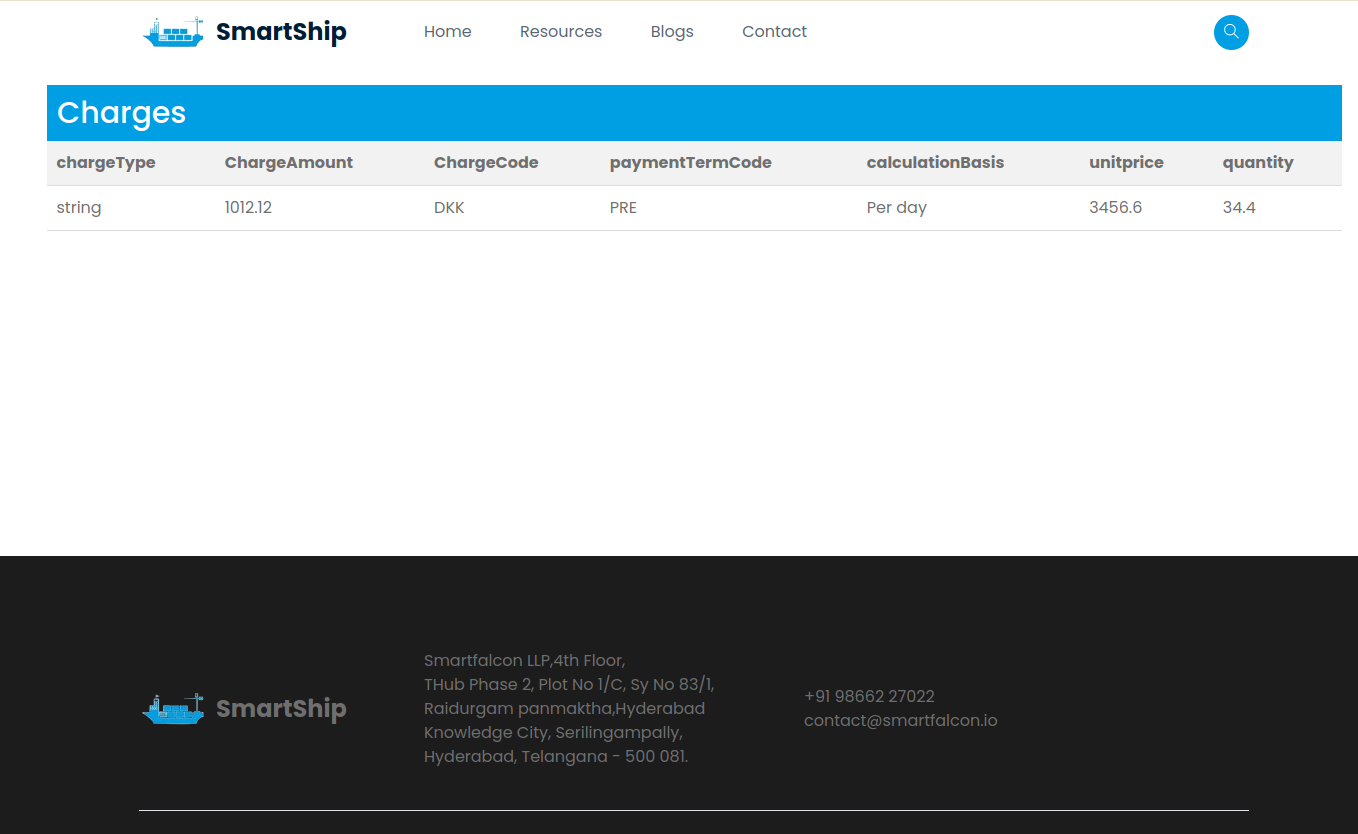
Upon receiving the booking request from the shipper, the carrier diligently computes the charges, factoring in the details provided by the shipper. Additionally, relevant supplementary charges pertinent to carrier operations are added. Once this meticulous calculation is complete, the carrier promptly notifies the shipper, furnishing comprehensive details of the charges. This transparent process ensures the shipper remains informed and can readily review the charges, fostering a smooth and efficient transaction.
Upon receiving a booking request, the carrier initiates a series of meticulous validations to ensure operational feasibility. These validations encompass critical factors such as vessel capacity, availability of inland transport, and equipment availability. Should any of these validations fail to meet the specified criteria, the carrier promptly informs the shipper of the unconfirmed booking status, marking it as pending. Subsequently, the carrier diligently rechecks the pending booking until all validations are successfully cleared. However, in the event that the validations persistently fail to meet the required standards, the carrier regrettably rejects the booking, ensuring that all operations proceed smoothly and efficiently.
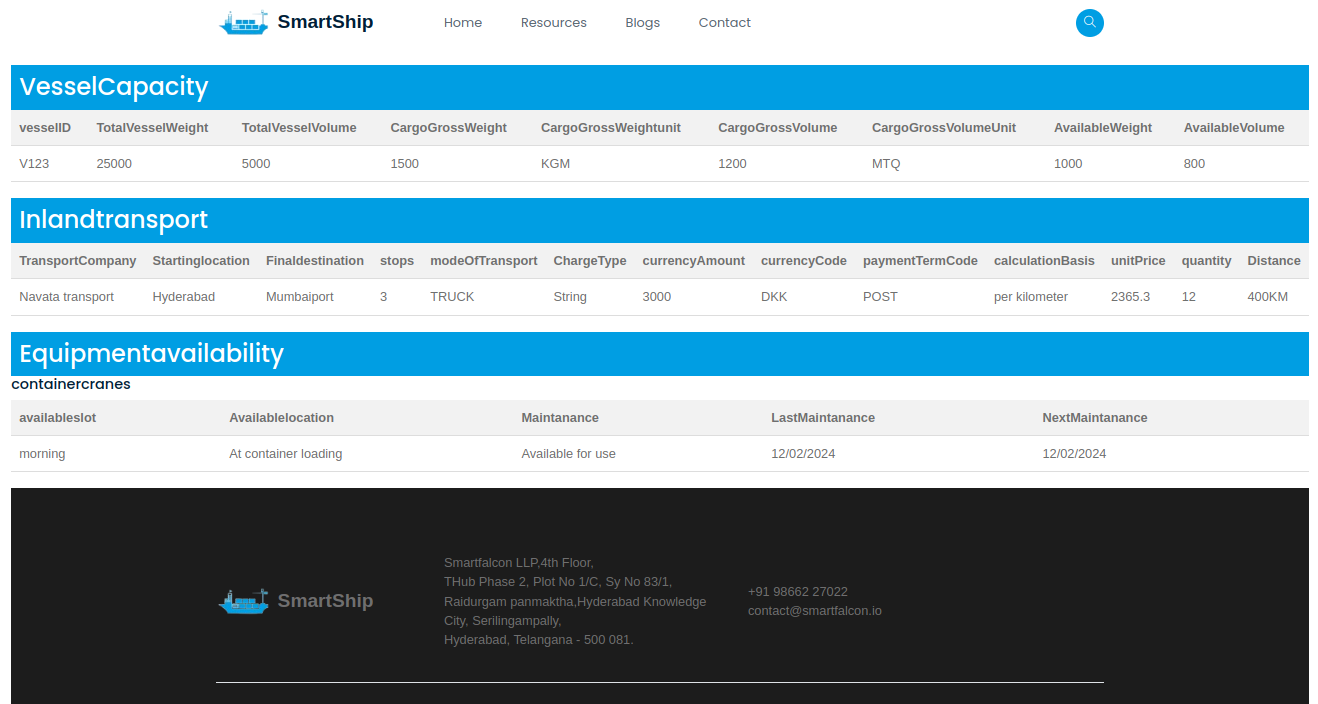
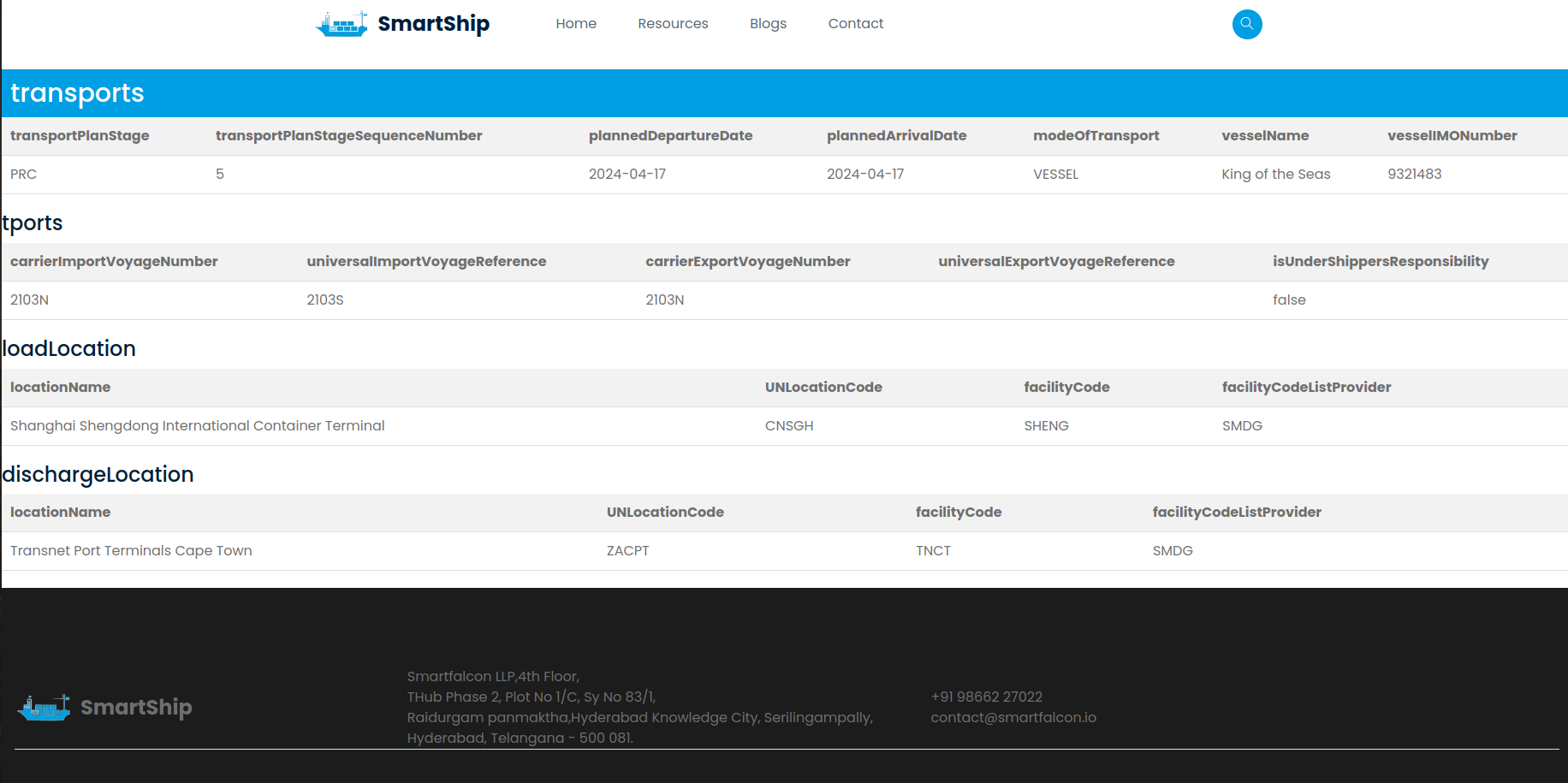
In the process of confirming booking requests, the carrier initiates the creation of pre-planned transports. These transports meticulously outline the load location, discharge location, transport plan stage, and other pertinent details. Subsequently, the shipper is provided with access to view these transport details. This transparent exchange ensures that both parties remain informed throughout the process, facilitating smooth and efficient transportation operations.
After meticulous validation and planning, the carrier confirms the booking by meticulously incorporating all pertinent details. This comprehensive confirmation encompasses booking information, confirmed transports, equipment details, charges, and all other relevant booking-related information. With this final step, the booking is validated, planned, and officially confirmed by the carrier, ensuring smooth and secure transportation operations.
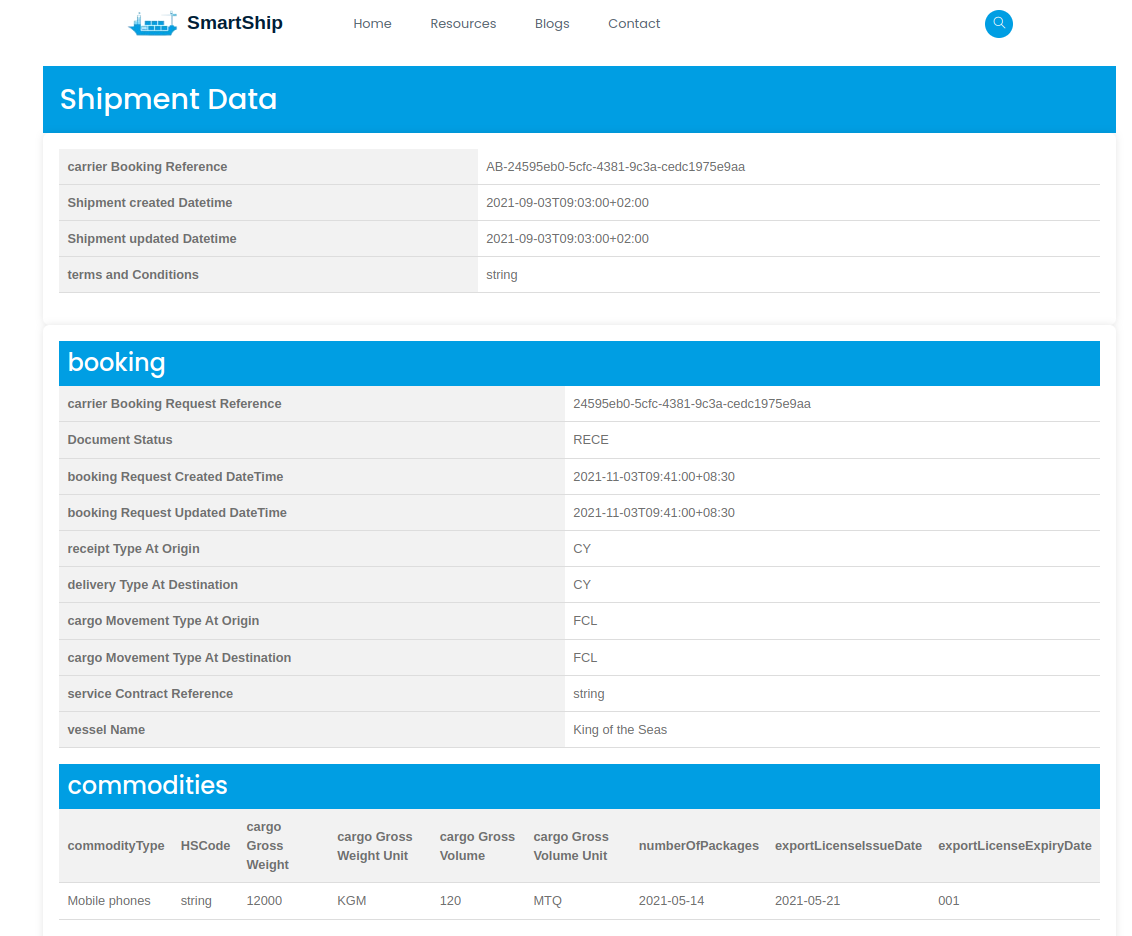
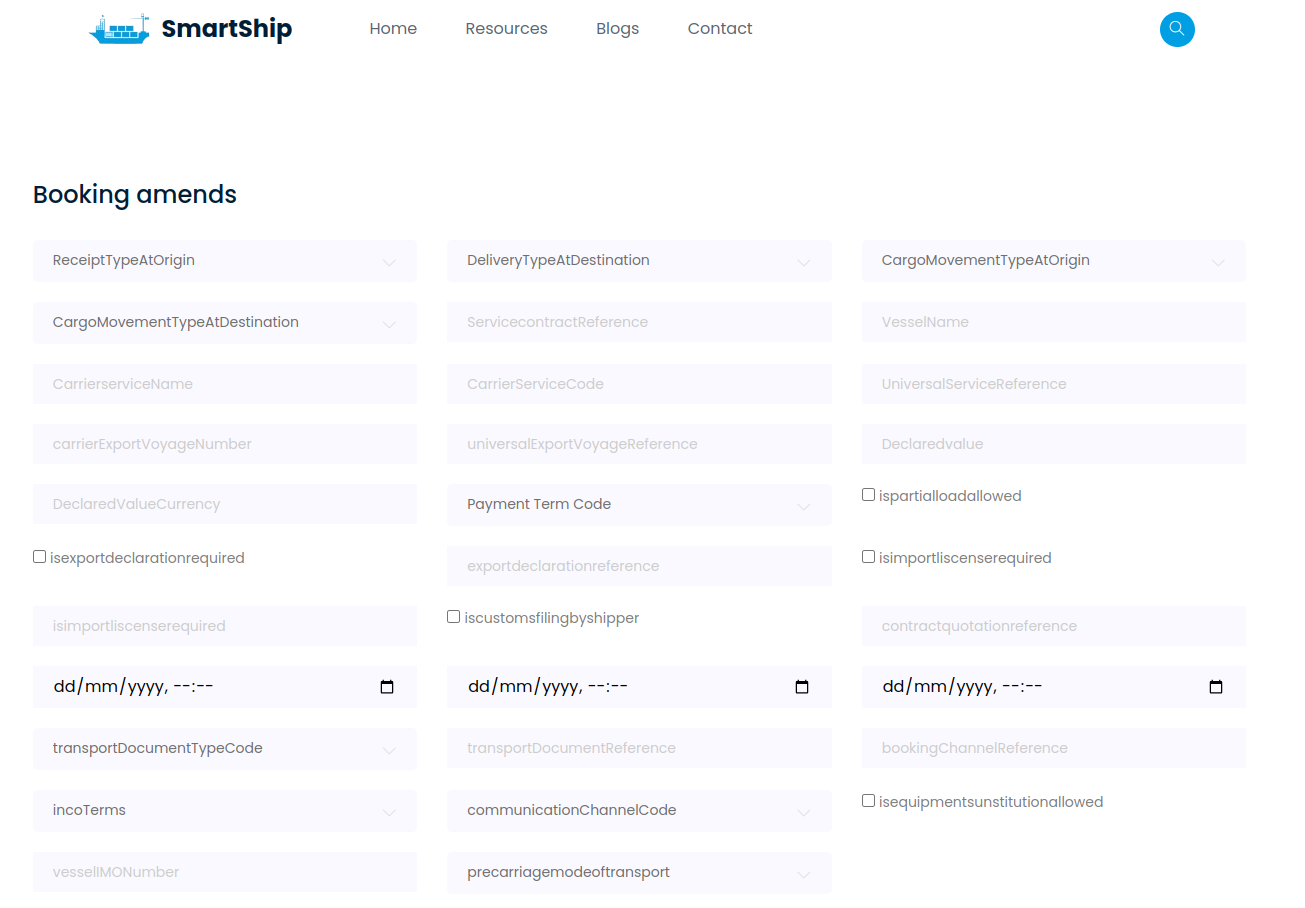
After the confirmation of the booking, the shipper may find the need to make amendments to the booking details. These changes could include modifications to the shipment's parameters, such as the quantity of goods, pickup or delivery locations, or requested equipment. To facilitate these adjustments, the shipper submits a request to the carrier, outlining the proposed changes. The carrier then reviews the requested amendments and evaluates their feasibility and impact on the existing transportation plan. Upon approval, the revised booking details are updated accordingly, ensuring that the transportation process remains flexible and responsive to the shipper's needs.
The shipper submits a shipping instructions comprising four sections. Firstly, general details are included, followed by consignment items, then the Utility Transport Document, and finally, Document Parties information. Each section plays a crucial role in providing comprehensive shipping instructions for the consignment.
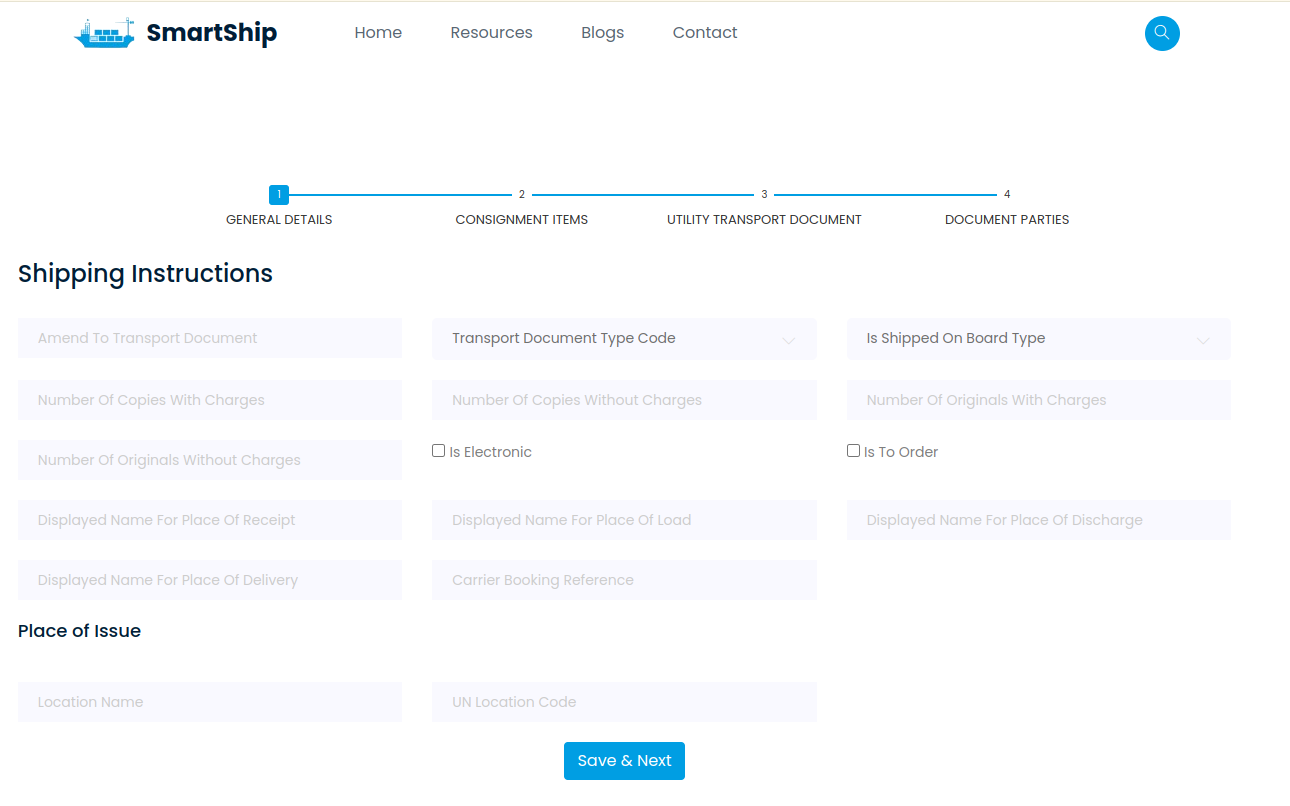
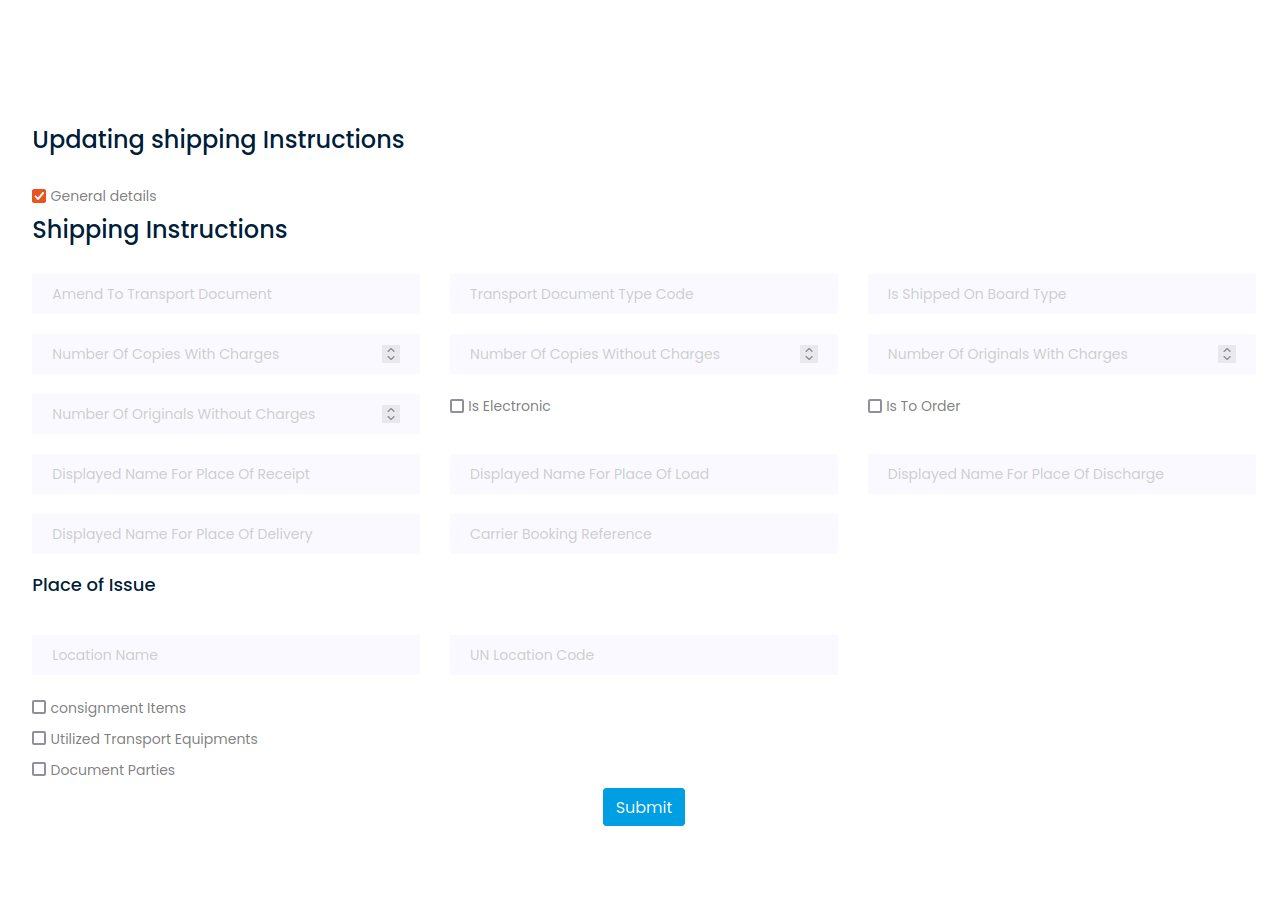
Upon receiving an update request from the carrier, the shipper revises the shipping instructions accordingly and posts the updated version. The shipper selects the specific section requiring modification and ensures the updated information is accurately reflected, maintaining clear communication with the carrier.
The shipper reviews the draft transport document meticulously. If all details are accurate, he proceed to approve by clicking the "Approve". However, if any discrepancies are noted, the shipper requests amendments by clicking the "Amendments", ensuring the document reflects precise information before final approval.
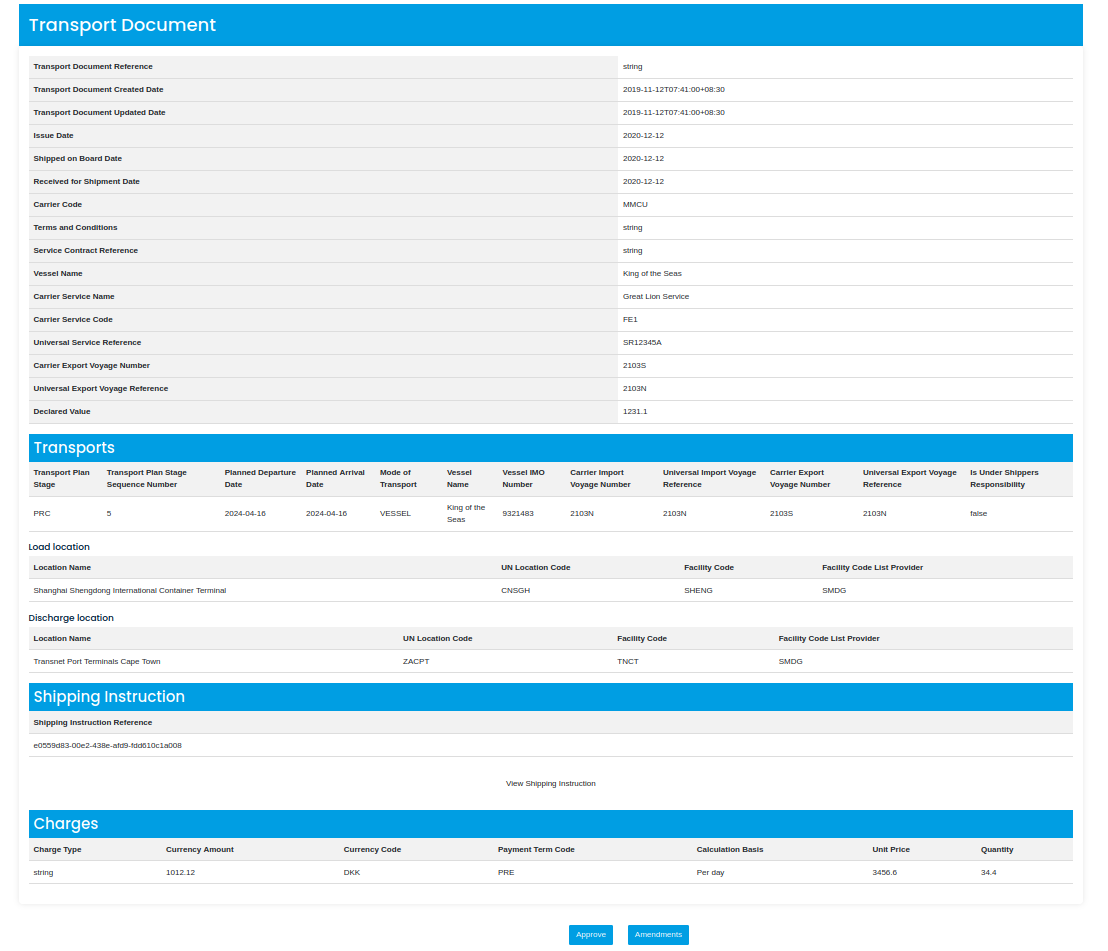
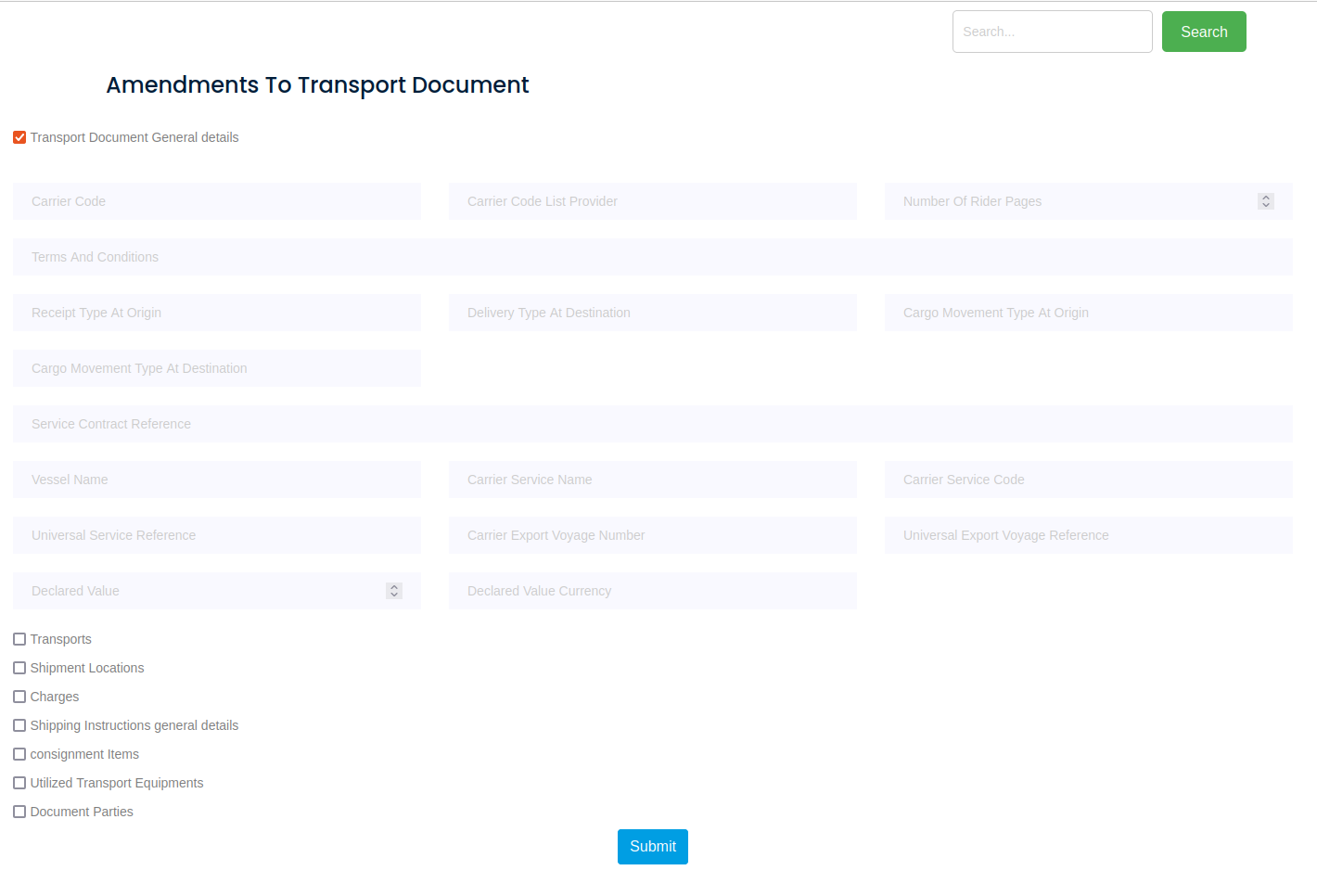
Upon verifying the draft transport document, if the shipper identifies inaccuracies, he request amendments by clicking the "Amendments". He then select the specific section requiring updates, ensuring corrections are made to accurately reflect the required details before finalizing the document.
After issuing the transport document, if the shipper needs to make amendments, he submit a surrendering request to the carrier. This request initiates the process of amending the transport document, ensuring accuracy and compliance with the required details.
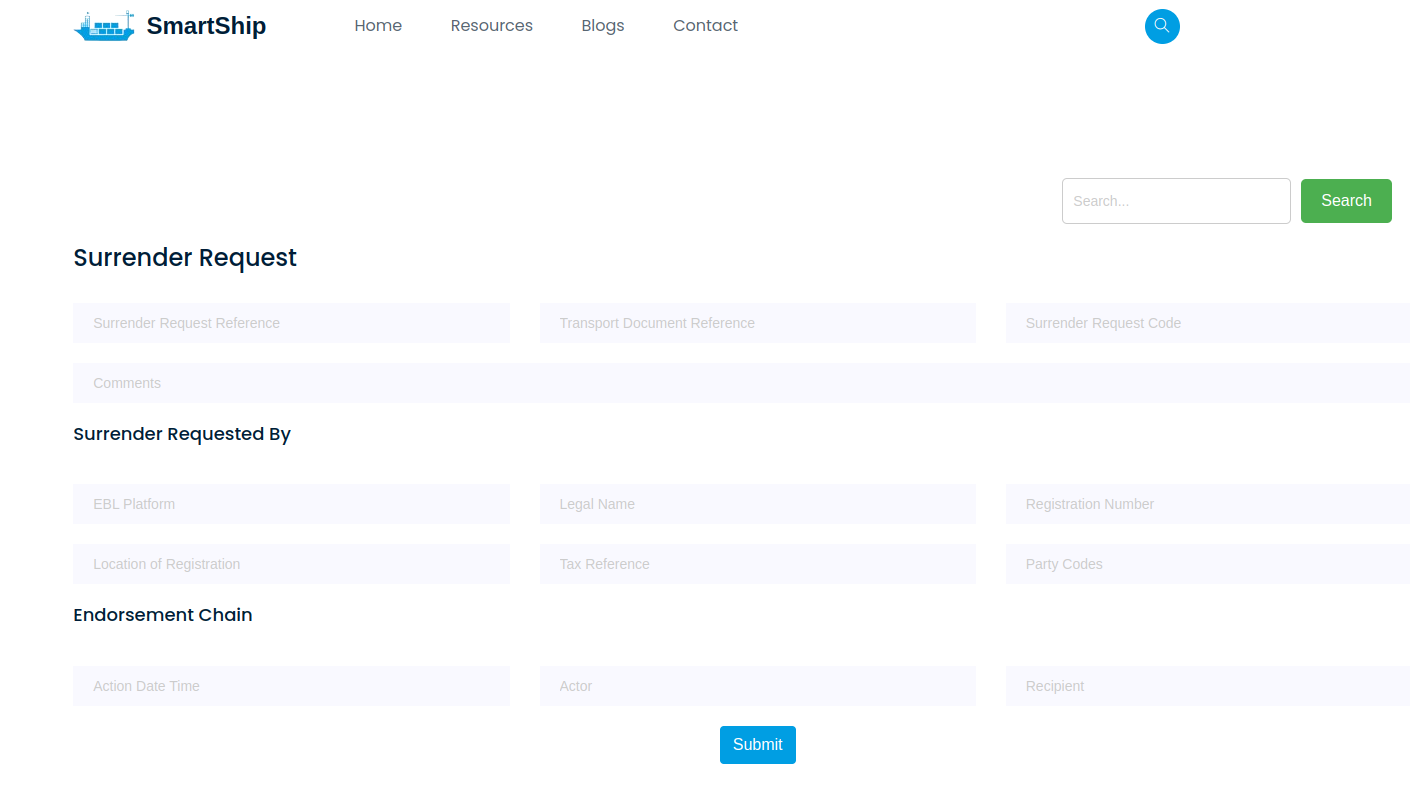
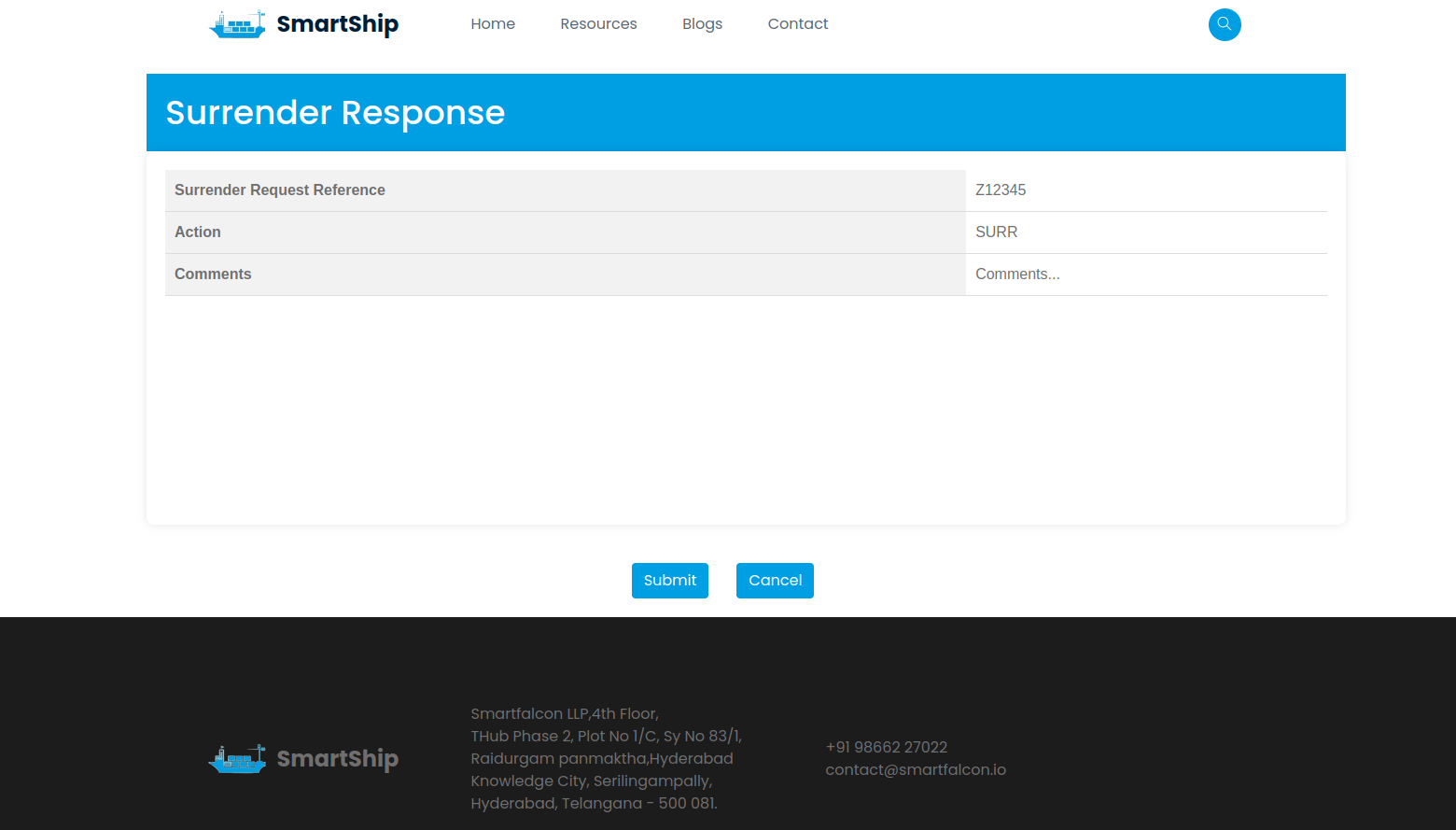
Upon receiving the surrender response from the carrier, the shipper reviews the response code. If the code indicates surrender, the shipper proceeds to surrender the document by clicking "surrender". However, if the response code suggests not to surrender, the shipper cancels the process, ensuring adherence to the carrier's instructions.
The shipper submits a track & trace subscription request to the carrier, seeking updates regarding the shipment, equipment, and transport events. This request enables the shipper to stay informed about the status and progress of the consignment throughout its journey.
